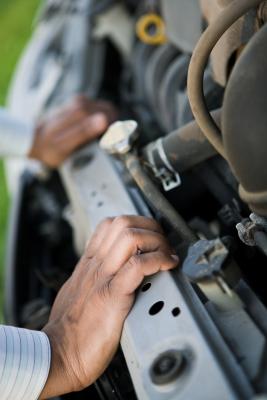
Nothing touches a mechanic's heart more than hearing a rebuilt engine run like a Swiss watch. The goal is to save money over buying a new or remanufactured engine, but also to enjoy the process. Rebuilding a Ford engine releases a wave of confidence and pride over any mechanic's heart. Unless you have lived in a garage since your youth, however, you will need some good help and direction.
Order the specific service manual for your engine; check out a local automotive college if you have one nearby to borrow the book from.
Label or mark hoses, wires, linkages and parts with a permanent marker. Use masking tape for labels and sort part into zipper lock bags. Use a digital camera to photograph your progress. Write down exactly what you did in a notebook. If you destroy a gasket make a note to get a new one. Act as if someone else will put the engine back together using your documentation, this will help ensure all parts are put together properly in the end and help you double check any errors that may occur.
Keep the old and new parts separate. Use the same labeling system on the new parts. Any pieces that you are unable to restore or repair should be replaced or fixed by a classic car mechanic.
Wash everything with a degreaser before reassembly. Lay out engine parts in their respective positions around the crankshaft. Do not mix up the pistons and rods. Heads should be back from the machine shop, ready to go. An engine stand is a wise investment.
Reinstall the camshaft first. Since the crankshaft is not in the way, you avoid dinging the camshaft . Use plenty of assembly lubrication. Use molybdenum grease on flat-tappet cam lobes, but not on the journals.
Wash the crankshaft again. A missed particle can wreak havoc. Install the main bearings very carefully to avoid distortion leading to premature failure. The rod and main bearings need to have a good hold at the saddles and rod journals so they don’t catastrophically wrap around the journals. Use lots of lubrication on the bearings in case the engine sits.
Torque the main bearing caps bit by bit per specs. They are numbered one through five from front to back. Start with the middle three cap. Work your way out - three, two, one, four and five. Repeat the same sequence several times, upping the torque by a few pounds.
Reassemble the rest of the engine using your copious documentation.
Check that the oil pump and engine are primed. Add oil and coolant before you turn it over.